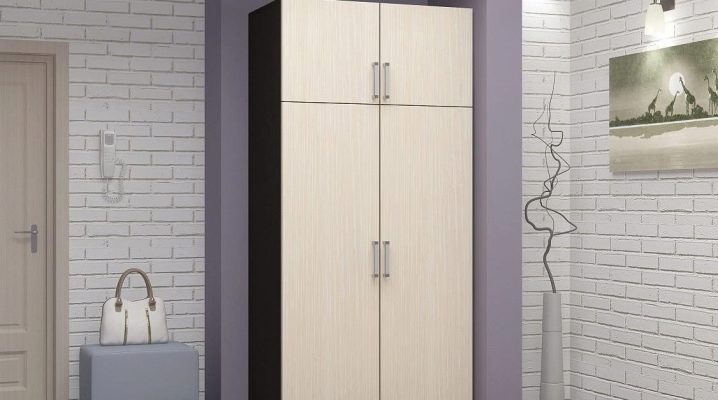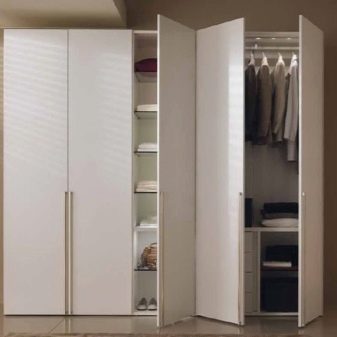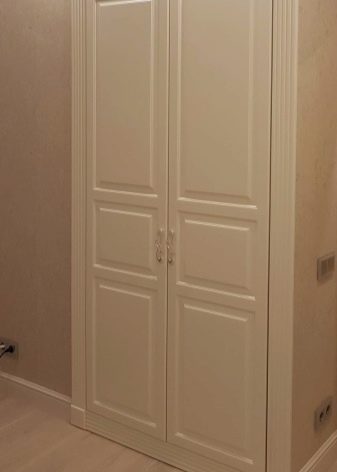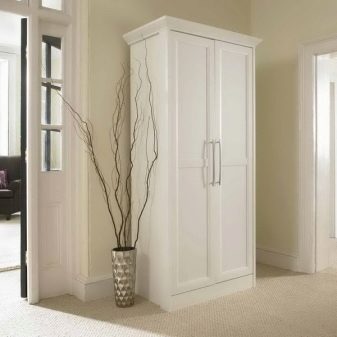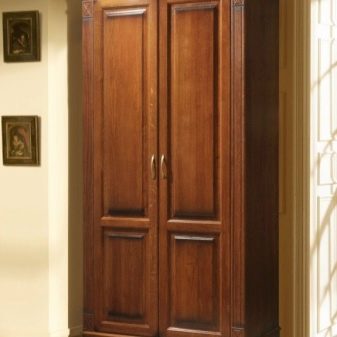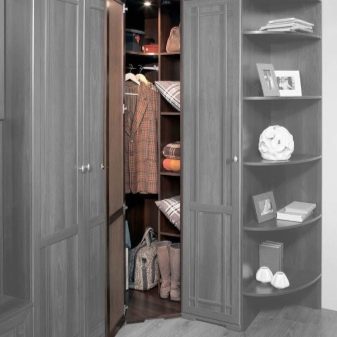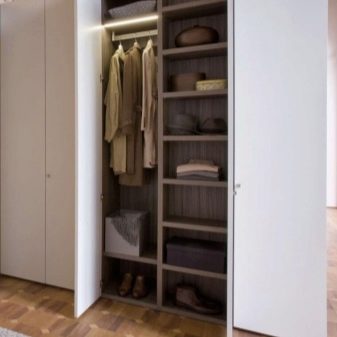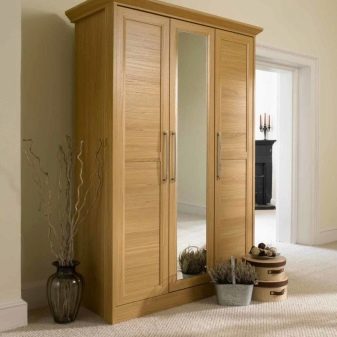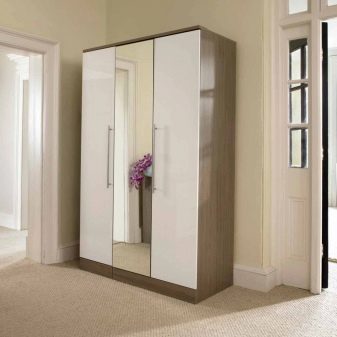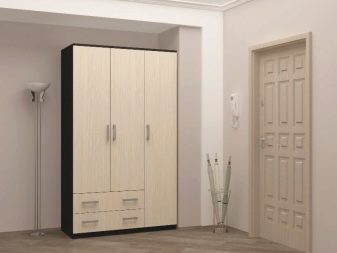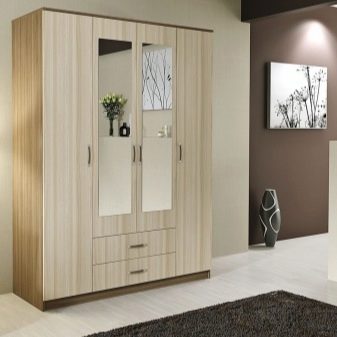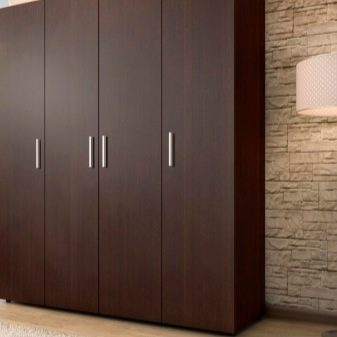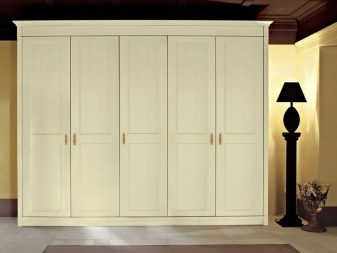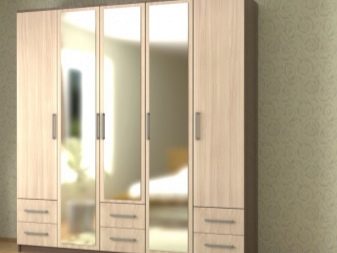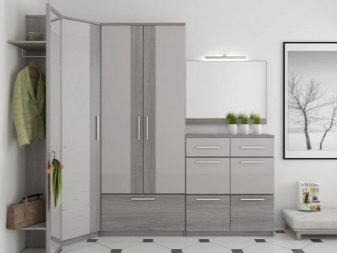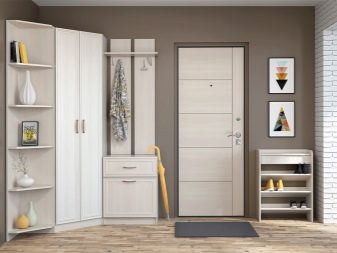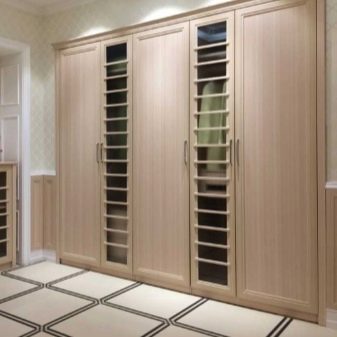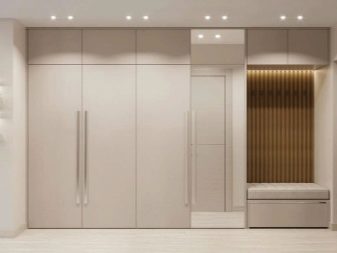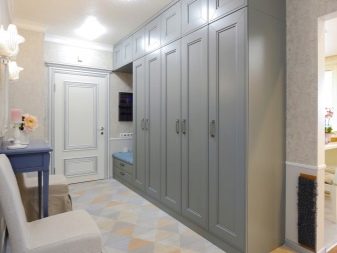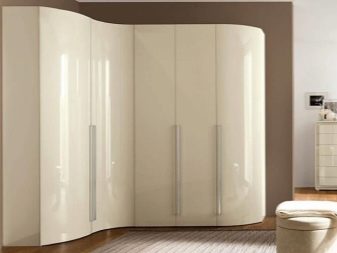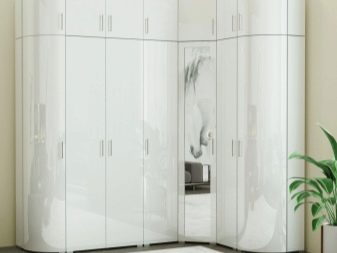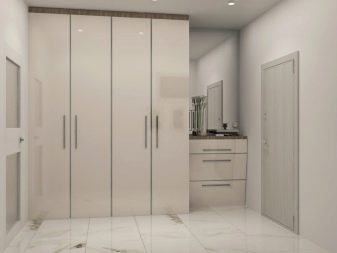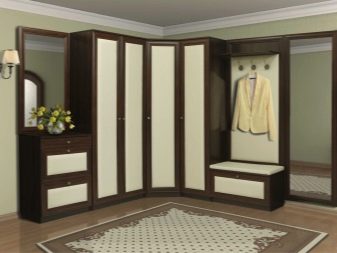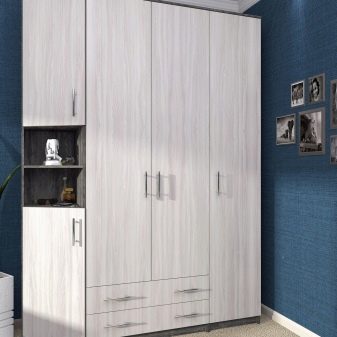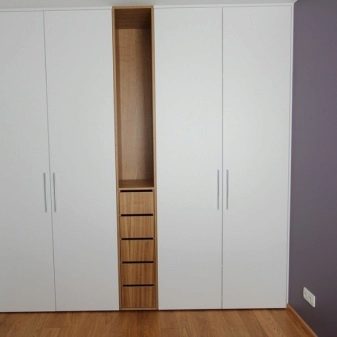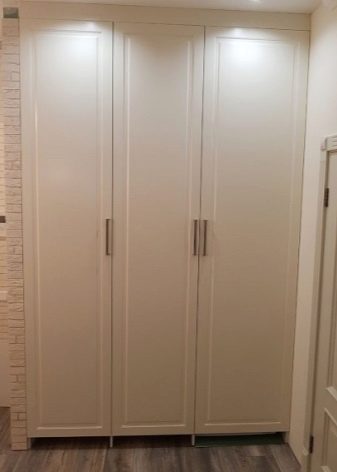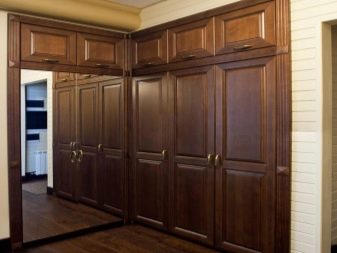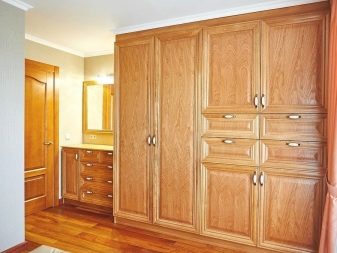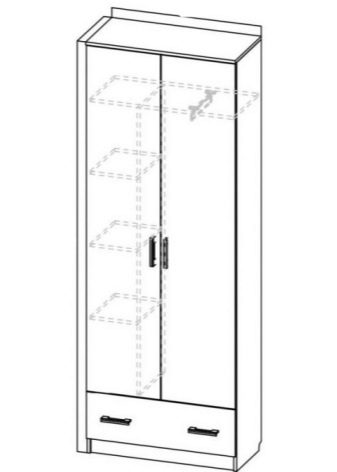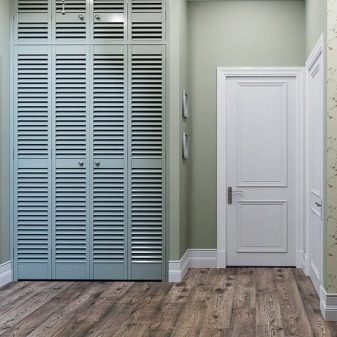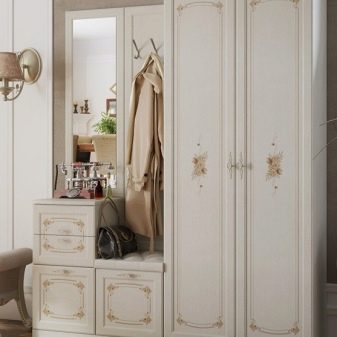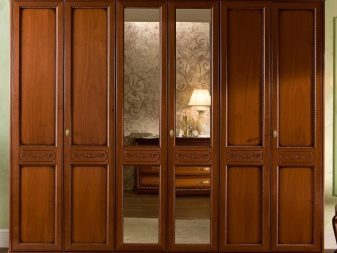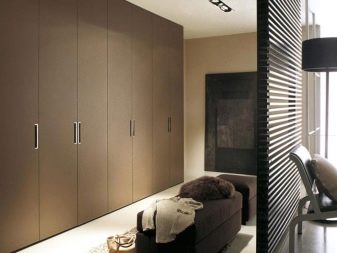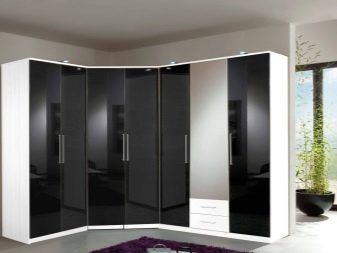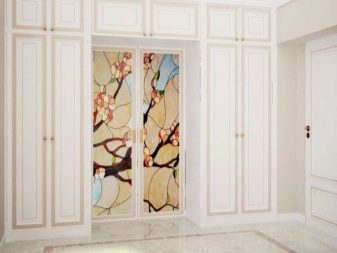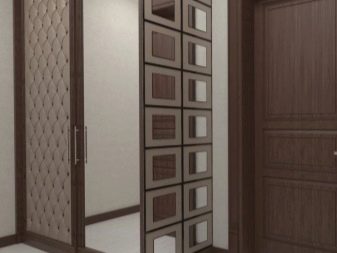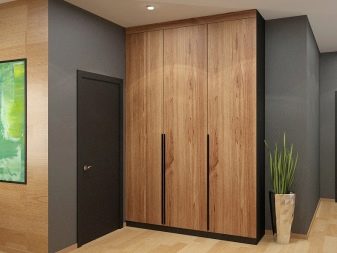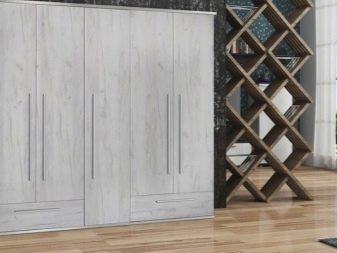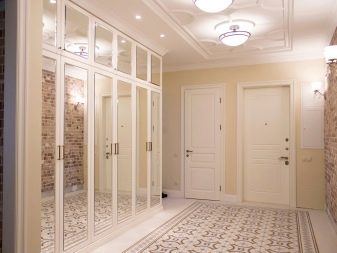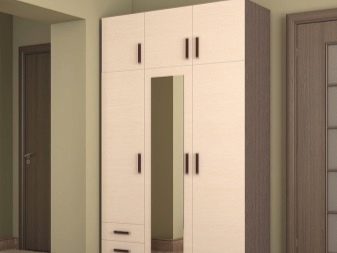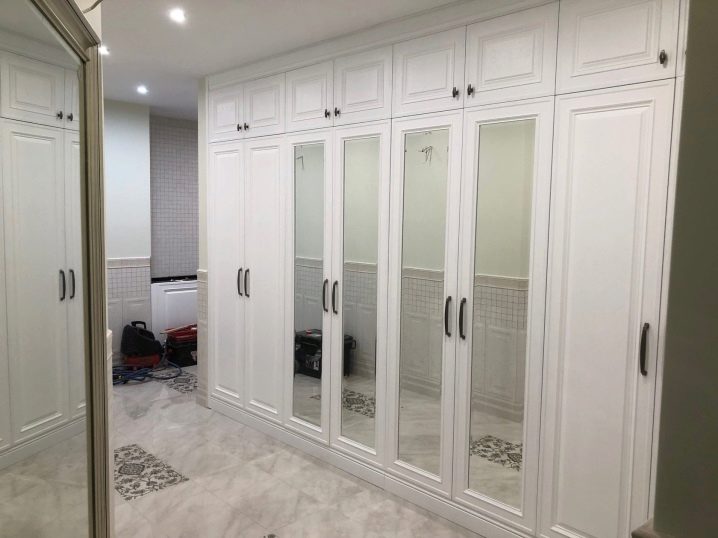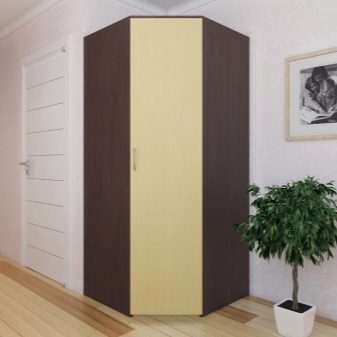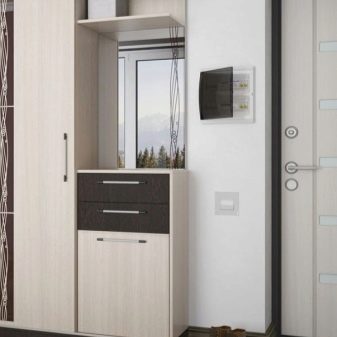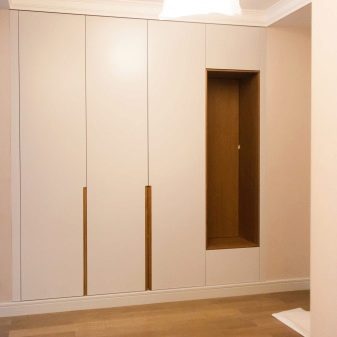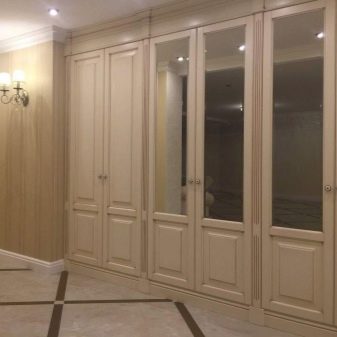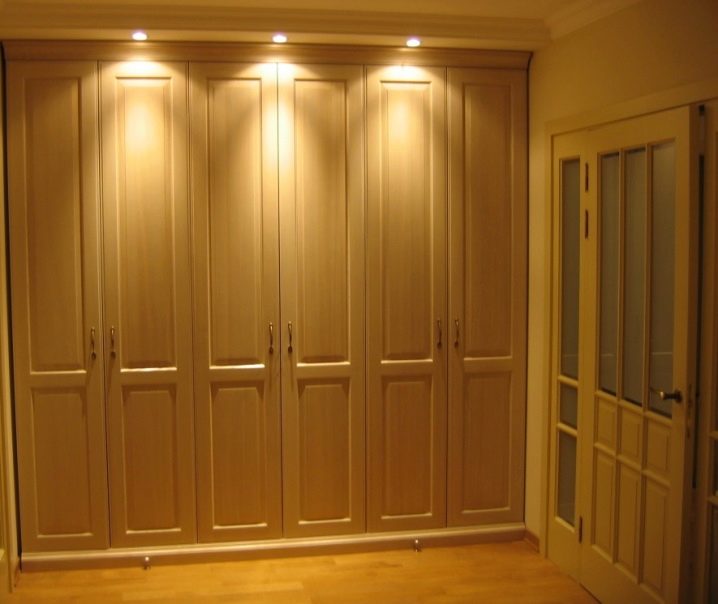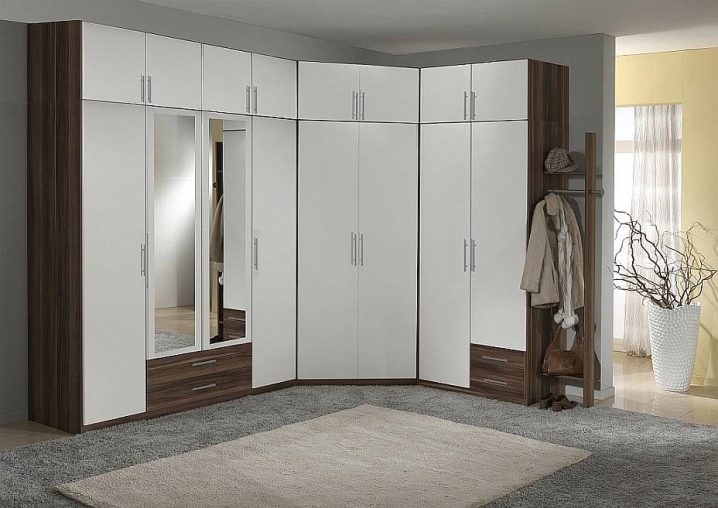All about the wardrobes in the hallway
Swinging wardrobes are an excellent option to replace unnecessary furniture in the hallway and largely relieve the space in it. Such samples are functional and very spacious. There are many varieties of them, it is easy to choose options for hallways of various sizes. The style of the products is diverse, which allows you to choose a wardrobe that harmoniously fits into the overall ambiance of the apartment.
Advantages and disadvantages
Wardrobes in the hallway are of two types:
- built-in - installed in wall niches or corners;
- cabinet - free-standing products that have all the attributes inherent in a cabinet.
The first option is cheaper, occupying the area planned for it, it seems to merge with the interior. The case version is easier to install, it is easier to move, but at a cost it will be more expensive.
This type of cabinets is convenient, since it successfully replaces many other pieces of furniture: bedside tables, bookcases, dressers, shelves, etc. In other words, it is a centralized device that allows you to rationally and orderly place many necessary things (from clothes to shoes) in almost one place.
Nowadays, swing cabinets are presented in many different designs, which have absorbed the features of modern style trends and design., in which you will find a lot of additional elements: mirrors, unusual lighting techniques, corner speakers with shelves, etc. All this determines the good functionality of the product, its convenience and overall presentability.
Key Features:
- built-in options are invisible, look compact and aesthetically pleasing;
- doors open without noise;
- significant capacity allows you to use the space in full;
- it is not difficult to assemble such a cabinet yourself, having even the initial skills of assembly and carpentry work;
- reliability and durability of structures.
The undoubted advantages of the products can be considered:
- significant capacity;
- relative savings on structural materials during installation;
- versatility and ease of placement of various items.
Minuses:
- in some cases not suitable for narrow rooms;
- bulkiness;
- some difficulties in the design of the facade.
Nevertheless, this type of furniture is in demand by the consumer and is in trend, since the product:
- reliable;
- provides convenient access to things;
- mobile - easily disassembled, carried and assembled;
- versatile - suitable for storing a wide variety of items;
- is inexpensive;
- varied in design.
Species overview
Wardrobes are diverse in appearance, they also differ in their functions, depth, specifics of filling, materials used. In a constructive sense, there are several types.
- Single leaf - compact design, but with good content, which can be supplemented. A good option for a small corridor.
- Bivalve - the classic version, accommodating a bar and shelves with a width of up to 110 cm. These products are intended for small rooms (in the absence of more significant living space).
- Three-door - characterized by the presence of spacious compartments for storing clothes (coats, raincoats, fur coats, jackets, etc.). They are often equipped with shoe boxes. A typical option is a swing cabinet with a mirror on the door.
- Four-door wardrobes - can be produced quite cumbersome. Nevertheless, some models (with not very wide doors) will turn out to be quite elegant outwardly.
- Five-leaf products contain shelves, niches, hanger bars. In some versions, wardrobes are equipped with drawers similar to dressing rooms. In other words, in addition to the doors on the front side, there are also 3-4 boxes for things.
- Mezzanine structures - are examples of Soviet times. In them, mezzanines are located in the upper part of the products.
- Modular options became widespread due to the ability to design furniture complexes, guided by personal preferences.
- Built-in options suggest different placement of wardrobes. They are placed in different parts of the premises, mounting in niches. Often they occupy the entire wall (up to the ceiling).
Below is the classification of the "plowmen" in shape.
Linear
Linear - large in size, extremely voluminous and versatile wardrobes for large hallways, usually classic.
In such systematic wardrobes, the space is often zoned, highlighting, for example, sections for the master's needs and guest sectors.
Corner
Corner - combine two far from useless aspects: spaciousness and spatial economy. They are used for small hallways in small apartments.
Corner products of significant size are suitable as full-fledged dressing rooms.
Radius
Such structures have convex-concave lines, can be placed in the corner or along the wall, correspond to the size of the hallways.
Combined
Products of this type (mixed varieties) combine the features of the listed types and a chest of drawers.
Materials (edit)
For such furniture designs, a variety of materials are used: various textures and colors. The decorative aspects depend on the style of the premises. In typical versions, budget MDF and chipboard are more often used.
Of course, more expensive products are also made, in particular from various types of wood. However, as a rule, "plowmen" do not differ in great variety in this direction.
Usually, a radius straight laminated chipboard is used (in body parts, elements of facades on request, in serial versions). The surfaces are glossy or matte. The choice of materials is left to the consumer and his vision of the final product. The possible palette includes about 40 shades.
MDF is more expensive and is used in the manufacture of front parts of furniture with the subsequent imposition of PVC film, enamel, veneer.
Wood mass has the highest price and is usually used to produce high quality and durable products.
Dimensions (edit)
Structurally, the cabinets can have different depths - 30–80 cm. 60 cm is considered a typical option, this size makes it possible to conveniently place various clothes without fear of wrinkling it (the rods are attached along the sections), and to get it off the shelves without much effort. The most common depth is 40 cm. The smallest depth is 35–37 cm, with which the filling of the cabinet is limited. These dimensions are typical for built-in structures with a width of up to 120 cm and a height of up to 220 cm.
Here, it is more convenient to use retractable hangers for filling.
Sometimes you come across cabinets with a depth of no more than 30 cm. Such products are worth buying for miniature hallways, since, in fact, this is no longer a separate unit, but a structural part of the closet - a compartment for clothes.
Design options
Design decisions directly depend on the general style direction of the interiors.
- In the spirit of Provence swing wardrobes of simple shapes and light colors (beige, cream, ivory) will look great. The use of natural wood is desirable here. We recommend the use of forged elements, art paintings or carvings. The style will fit well with "swing doors" with shutter doors.
- The classics are characterized by: elegance of lines, use of noble materials, luxurious decor, monochromatic execution, striving for symmetry, as well as imitation of carving.It is desirable to select light and brownish tones (wenge, walnut, etc.).
- High-tech (hi-tech). This style direction will be successfully supported by "open planners" with glossy or matte facades made of glass or plastic. Uncomplicated forms, a minimum of decor, and relatively strict proportions are preferable. It is characterized by a variety of colors, but the most stylishly visualized are "openers" in black and white.
- Smoothness of lines, unusual shape, gravitation towards asymmetry, use of inclusions of other style directions, combination of materials (wood, plastic, glass), carving, elements with stained-glass windows - the main features of modern modernity... Furniture structures must maintain natural and soft colors. The "openers" can be decorated here with sandblasted patterns, leather, bamboo or rattan inserts. Stained glass and mosaic will look harmoniously.
- Minimalism - the name of the style speaks for itself. Here "plowmen" should be characterized by strict geometric configurations, the use of muted colors, free from decor. For this style, built-in structures are usually selected, and the facades are made of wood, leather and glass. In narrow hallways, it is useful to use a mirror effect to create a spatial illusion.
- Scandinavian style - these are "plowers" made of real solid wood, with simple shapes, in light colors. Everything is laconic, extremely functional, fresh and light.
Selection Tips
Before buying a “rider”, we recommend that you clearly understand what exactly you need in terms of its structural arrangement, spaciousness and dimensions. It is worth striving for compliance with the style of the product with the general background and interior features. Think in advance and the color palette of the future purchase.
It is better to measure the room, to estimate the layout of the product in such a way that there is a couple of centimeters in stock.
In a spacious corridor, it is logical to place the cabinet along the wall, and for small rooms we recommend corner options.
Let's supplement our recommendations with some particular aspects.
- For the greatest functionality of the product, purchase models with drawers, since in any apartment there are small things that will surely find their place in them.
- Taking into account the size of the hallway, choose a tall cabinet with a mezzanine if there are high ceilings in the corridor.
- The color of the product should be selected taking into account the overall style, but for a small room it is better to give preference to light shades that visually increase the space.
- We recommend choosing the classic versions of "plow-openers", they have fewer open elements, they look quite aesthetically pleasing, and there will be less hassle with cleaning.
- The materials used must be of good quality, the doors open smoothly, without squeaking and unnecessary effort. There should be no scratches or other defects on the facades. Check fittings and fasteners.
- There should be space in the room for an unobstructed passage.
- Do not overload the entrance room with unnecessary furniture elements, especially for narrow hallways. Be guided by sound minimalism.
Accommodation rules
A capacious "opener" with many different drawers, allowing you to neatly place a significant number of items in them, is the best way out for hallways that are decent in size.
And if in the custom version you also provide mezzanines, then the space for things will increase significantly.
For small corridors, the best option would be a single or double door cabinet, which should be placed along the wall. For such premises, corner options are also convenient, which save space to a large extent, definitely remaining quite spacious.
If there is a suitable niche in the hallway, then a built-in "opener" will perfectly fit in it, which will look great as a single whole with the wall, without disturbing the perception of the entire room as a whole. The depth and filling of the cabinet will be determined by the dimensions of the niche.
The lighting of furniture is also appropriate, especially in narrow hallways, it allows you to visually increase the space of the premises.
Beautiful examples in the interior
Corner version of the swing cabinet in the hallway. Contains convenient side shelves and a mirror to correct the spatial impression.
Large swing-out wardrobe in a spacious hallway, corner option. On the side is a handy miniature hanger for storing wet clothes. Perfect combination of mirrors and glossy surface of cabinet doors.
The swing cabinet impresses with an abundance of convenient sections with bars and deep drawers. Intense lighting is provided.
Hinged custom wardrobe. Glossy white cabinet doors and a mirror visually enlarge the space of the room.
